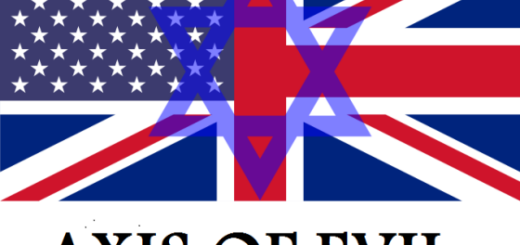|
Elsewhere at Legion.com we said that the human brain can be divided into two hemispheres. By that we meant that the human brain could be thought of as comprising two hemispheres. In this section we’re going to consider what happens when a living person actually has their brain divided into two hemispheres.
Many people with epilepsy can control, or manage, their condition with medication. Sometimes, surgery may be undertaken to remove a small amount of tissue from which the epileptic activity is generated. But for less fortunate people, medication is not successful, and because of the location of the particular focal tissue, surgery to remove that tissue has been judged to be impossible. And for some of these people their epilepsy just keeps getting worse. What do they do?
Roger Sperry and his team including a graduate student, Michael Gazzaniga, and the neurosurgeons Joseph Bogen and Phillip Vogel, suggested cutting the corpus callosum. The corpus callosum is the major connection between the left and right cortical hemispheres. It was hoped that this drastic measure would limit the “out of control” action of brain neurons that occurs in a seizure.
Their first patient, “WJ”, suffered multiple head injuries in World War II. He had his first seizure in 1951 and, despite medication, his convulsions increased in severity and frequency. Due to its position, surgery to remove the brain tissue initiating the epileptic activity was not an option.
At age 48, WJ’s corpus callosum was cut and his two cerebral hemispheres were separated. And pretty well, this solved WJ’s epilepsy problem. But what was life like with a brain separated into two halves – a ‘left brain’ and a ‘right brain’?
The simple answer would have to be ‘not very spectacular and pretty normal’. As the surgeons Bogen and Vogel write
In general, these patients present a normal appearance in ordinary social situations, including their conversation, and their demeanor during the taking of history and physical examination [1]
To understand why these patients appear so seemingly normal in regular social situations we have to understand a little bit about anatomy. The left hemisphere is connected to the right side of the body (and vice-versa). So the right arm and the right leg etc. are controlled by the left side of the brain.
The connection of the eyes to the brain is a little more complicated. The connection is not a simple one of the left eye to the right hemisphere. Both eyes send signals to both hemispheres, but they do so in such a way that images from our left field of view are sent by both eyes to our right hemisphere, and images from our right field of view are sent by both eyes to our left hemisphere.
In an ordinary social situation speech is received into both right and left ears – so both the disconnected “left brain” and “right brain” hear the conversation. Both the patient’s “left brain” and “right brain” see half of what’s going on, and by moving the eyes from left to right each “brain” can see pretty much all that is going on. Although one hemisphere experiences touch from only one hand and one side of the body, the other hemisphere can see what is touched. To a casual observer, all in all, the system appears to be working quite normally.
Sperry and his team set up their laboratory so that a patient could be seated in front of a screen onto which words and images were projected. A spot was presented in the middle of the screen and the patient would be asked to fix their gaze on this point. If images were flashed onto the screen very briefly, the patient wouldn’t have enough time to shift their gaze to the image – so the image would only be seen by one hemisphere of the brain.
The patient’s hands were also screened from their own view. This meant that objects could be placed in the patient’s right hand, and the sensation of that object would only be sent to the “left brain” without the “right brain” either feeling or seeing it (and vice versa).
Sperry knew that in “normal” people it really didn’t matter much which cortical hemisphere initially received an image, or a sensation of touch, as the information would be immediately “shared” with the other hemisphere via the corpus callosum. But these patients didn’t have a corpus callosum – so what would happen?
When images were flashed into WJ’s right visual field he could correctly say what the image was. The image was seen by his left hemisphere (but not the right). The “left brain” then used its speech centre to communicate the appearance of the image to Sperry.
However, when images were presented in WJ’s left visual field, he acted as though he had suddenly gone blind. He told the scientists that he couldn’t see any bursts of light, letters, or anything else presented to him. But WJ wasn’t blind, he was mute.
You see these images were only seen by his right hemisphere, and like most right handed people (and many left handed as well), WJ only had one speech centre, and that was in his left cortical hemisphere. So his “right brain” had no speech centre to communicate what it knew. Sperry knew this because all the while WJ had been watching the images being flashed on the screen, his left hand (controlled by his “right brain”) had been pressing a telegraph key each time an image was presented.
In another experiment with a split-brain patient, the picture of a spoon was presented to the mute “right brain”, and the patient was unable to say what the item was. But the patient was able to correctly select a spoon from a group of items hidden behind a screen, by touching it his left hand. In these patients the “right brain” clearly shows an awareness that is independent and separate to that of the separated “left brain”.
Did Sperry’s split-brain patients now have two consciousnesses? There appears to be pretty good evidence that the answer to that question is yes. Its not simply a case of “the left hand not knowing what the right hand was doing”, we appear to have a phenomenon of the left hand/right brain not agreeing with what the right hand/left brain was doing.
This phenomenon was termed intermanual conflict. For example, one patient found that his right hand was struggling to pull up his pants, while his left hand struggled to push them down. On another occasion, this same patient’s left hand attempted to strike his wife as his right hand grabbed it to stop it. Bogen writes
Almost all complete commissurotomy patients manifest some degree of intermanual conflict during the early postoperative period. For example, a few weeks after operation, R.Y. (26) was seen buttoning his shirt with one hand while the other hand was following along just behind undoing the buttons….Even our youngest patient (L.B.)….While doing the block design test unimanually with his right hand, his left hand came up from beneath the table and was reaching for the blocks when he slapped it with his right hand and said, ‘That will keep it quiet for a while.’ [2]
An even more compelling illustration of split-brain multiple consciousness and will, is the case of the patient Paul S. For most people, their speech is controlled by their left cortical hemisphere, but very rarely a person has speech areas in both hemispheres. Paul S. was just such a person. He was also a patient who received a commissurotomy. After his split-brain surgery, both his left hemisphere and his right hemisphere could speak. When they did, Paul’s left hemisphere said that he wanted to be a draftsman, and his right hemisphere said he wanted to be a racing driver. Paul was tested at the time of the Watergate scandal, and his left hemisphere liked Richard Nixon, and his right hemisphere disliked Nixon.
When the corpus callosum is severed in adults, we create separate consciousnesses which can act together cooperatively within a single body. In Multiple Personality Disorder (MPD), or Dissociative Identity Disorder (DID), as it is now known, psychological trauma to the developing mind also creates separate consciousnesses which can act together cooperatively within a single body. And in both cases, in most normal social situations, the individual would provide no reason for someone to suspect that they were not dealing with someone with a unitary consciousness.
- Bogen & Vogel, 1974
- Bogen, 1997
Back to top
Bogen, J.E. (1997). Physiological consequences of complete or partial commissural section. In M. J. M. Apuzzo (Ed.). Surgery of the Third Ventricle (2nd ed., pp. 167-186). Baltimore: Williams & Wilkins.
Bogen, J.E., & Vogel, P.J. (1974). Neurological status in the long term following complete cerebral commissurotomy. [This paper originally appeared as a chapter in F.Michel and B. Schott (eds.), Les Syndromes de Disconnexion Calleuse chez l’Homme, Hôpital Lyon,1974.] Retrieved June 3, 2008, from http://www.its.caltech.edu/~bogen/text/lyon.html
Bower, B. (1996). Whole-brain interpreter: a cognitive neuroscientist seeks to make theoretical headway among split brains. Science News, 149(8), p124-125.
Gazzaniga, M.S., & Hillyard, S.A. (1971). Language and Speech Capacity of the Right Hemisphere. Neuropsychologia, 9, 273-280.
Springer, S.P., & Deutsch, G. (1989). Left Brain, Right Brain, (3rd Ed.). New York: W.H. Freeman and Company.
|
















